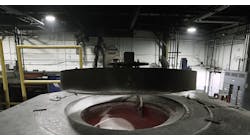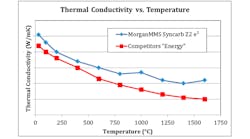Latest from Melt/Pour
Good Luck and Good ‘Nite
PE Investor Buys Aluminum Diecaster
Transforming Waste Into Value
Megacasting to Start at Honda
Partnership Boosts Melt Capacity by 30%
Optimizing Aluminum Melt Quality
Diecaster is Rebranding and Investing
MORGAN MOLTEN METAL SYSTEMS introduced its Syncarb Z2 e², an isostatically pressed, hybrid ceramic-bonded crucible it indicated will achieve longer service life and increased energy savings. Designed specifically for melting and holding aluminum, the Syncarb Z2 e2 (“energy efficiency”) has extensive tested in lab and production settings, with results that confirm operating performances surpassing the energy consumption and durability of competing “energy” crucibles.
The Syncarb Z2 series of products have high silicon-carbide and graphite contents, and display a higher breaking strength due to improved granulation process, resulting in an increased resistance to damage and higher stresses during operation and handling. The new Z2 e2 displays higher thermal conductivity at all working temperatures, translating to increased energy savings for customers.
“The MorganMMS Technology Team, with its development of the Syncarb Z2 e2, has created a crucible designed specifically for optimum energy savings and efficiency,” according to Brandon Kruse, MorganMMS global product manager.
The new Z2 e2 brings several material and structural advantages to help improve crucible performance and foundry operations. In addition to its 56% higher transverse breaking strength it maintains integrity at relatively higher values due primarily to the granulation of the mix, processing parameters and advanced materials.
In addition, thanks to its advanced glaze technology, the Z2 e2 achieved an average 10% increase in oxidation resistance over the competition in both five- and ten-day Loss On Ignition (LOI) tests. MorganMMS noted that independent lab research has proven the crucibles’ superior thermal conductivity over all working ranges (see graph) whilemaintaining a standard wall thickness, which correlates to increased energy efficiency and savings.
Furthermore, although the developer noted that thermal conductivity for any crucible would degrade over time, it said the oxidation process proceeds more slowly in Z2 e2 crucibles. Reduced degradation combined with a higher thermal conductivity results in greater energy savings than competing products, not only when the crucible is new but throughout its lifetime. MorganMMS stated this translates into “longer run times, more heats, less energy usage and an overall melting solution advantage …”.









